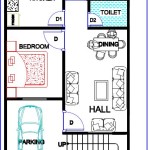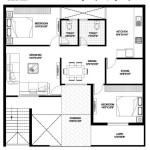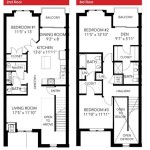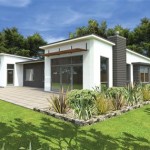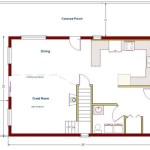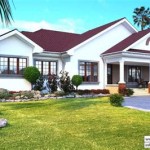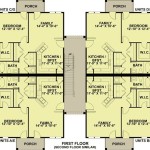Integrating Outdoor Living Spaces into Home Plans
The integration of outdoor living spaces into home plans has witnessed a significant surge in popularity, fueled by a desire for enhanced quality of life and a heightened appreciation for the natural environment. These spaces, ranging from simple patios to elaborate outdoor kitchens and entertainment areas, represent an extension of the indoor living environment, offering opportunities for relaxation, recreation, and social interaction. Thoughtful planning and design are paramount to successfully incorporating outdoor living spaces into home plans, ensuring seamless integration with the existing architecture and maximizing functionality and usability.
The initial stages of planning involve a comprehensive assessment of the property's characteristics, including its size, topography, orientation, and microclimate. Understanding these factors is crucial for determining the optimal location, size, and configuration of the outdoor living space. The intended use of the space is another critical consideration. Will it primarily serve as a relaxation area, a dining space, an entertainment hub, or a combination of these? Identifying the primary functions will guide decisions regarding layout, features, and amenities.
Furthermore, it is essential to consider the architectural style of the home and how the outdoor living space can complement and enhance its aesthetic appeal. The materials used in the outdoor space should harmonize with the materials used in the home's exterior, creating a cohesive and visually appealing design. Attention to detail, such as the selection of appropriate landscaping, lighting, and furniture, is crucial for creating a welcoming and functional outdoor living environment.
Key Point 1: Optimizing Space and Functionality
Maximizing space and functionality is a cornerstone of successful outdoor living space design. The layout should be carefully planned to ensure efficient use of the available area and to create distinct zones for different activities. For example, a dedicated dining area with sufficient seating and a grilling station could be separated from a lounge area with comfortable seating and a fire pit. Defining these zones helps to create a sense of order and functionality within the overall space.
The size of the outdoor living space should be proportionate to the size of the home and the property. A large, sprawling patio might overwhelm a small cottage, while a small balcony might not be sufficient for a large family. Careful consideration should be given to the scale of the space and its relationship to the surrounding environment.
Traffic flow is another important factor to consider. The layout should allow for easy movement between different areas of the outdoor living space, as well as seamless transitions between the indoor and outdoor environments. Avoid creating bottlenecks or obstacles that could impede movement. Pathways should be clearly defined and well-lit to ensure safety and accessibility.
The incorporation of storage solutions is often overlooked but can significantly enhance the functionality of an outdoor living space. Built-in benches with storage underneath, outdoor cabinets, and dedicated storage sheds can help to keep the area tidy and organized. These storage solutions provide a convenient place to store cushions, blankets, grilling tools, and other outdoor essentials.
In addition to storage, consider incorporating features that enhance the space's usability throughout the year. Shade structures, such as pergolas, awnings, or retractable shades, can provide relief from the sun during the hottest months. Outdoor heaters and fireplaces can extend the usability of the space into the cooler months. These features can transform an outdoor living space from a seasonal amenity into a year-round retreat.
Key Point 2: Material Selection and Durability
The selection of appropriate materials is crucial for ensuring the durability and longevity of an outdoor living space. Materials should be chosen based on their ability to withstand the elements, resist wear and tear, and complement the overall aesthetic of the home and the surrounding landscape. Different materials offer varying levels of durability, maintenance requirements, and aesthetic appeal.
For decking and patios, popular choices include wood, composite decking, stone, concrete, and brick. Wood offers a natural and warm aesthetic, but requires regular maintenance to prevent rot and decay. Composite decking is a low-maintenance alternative that mimics the look of wood and is resistant to moisture, insects, and fading. Stone, concrete, and brick are durable and long-lasting materials that can be used to create a variety of textures and patterns.
Outdoor furniture should be selected based on its durability and weather resistance. Options include aluminum, wrought iron, teak, and resin wicker. Aluminum is lightweight, rust-resistant, and easy to maintain. Wrought iron is strong and durable, but can be prone to rust if not properly treated. Teak is a naturally weather-resistant wood that develops a beautiful patina over time. Resin wicker is a synthetic material that is resistant to moisture, fading, and insects.
When selecting materials for outdoor kitchens and grilling areas, consider factors such as heat resistance, stain resistance, and ease of cleaning. Stainless steel is a popular choice for countertops and backsplashes due to its durability and resistance to corrosion. Stone and concrete are also suitable options for these surfaces. For grilling islands, consider using materials that can withstand high temperatures, such as brick, stone, or concrete.
The use of durable and weather-resistant materials not only enhances the longevity of the outdoor living space but also reduces the need for frequent maintenance and repairs. This can save time and money in the long run and ensure that the space remains a functional and enjoyable part of the home for years to come.
Key Point 3: Integrating Landscaping and Lighting
Landscaping and lighting play a vital role in creating a welcoming and functional outdoor living environment. Landscaping can enhance the aesthetic appeal of the space, provide shade and privacy, and create a sense of connection with nature. Lighting can extend the usability of the space into the evening hours, create ambiance, and enhance safety and security.
When planning landscaping, consider the climate, soil conditions, and the amount of sunlight the area receives. Choose plants that are well-suited to these conditions and that require minimal maintenance. Incorporate a variety of plants with different textures, colors, and heights to create visual interest and depth. Consider using native plants, which are adapted to the local environment and require less water and fertilizer.
Trees can provide shade and privacy, while shrubs and hedges can create natural barriers and define different areas of the outdoor living space. Flowers can add color and fragrance, while groundcovers can help to control weeds and erosion. Consider incorporating edible plants, such as herbs and vegetables, into the landscape to create a functional and productive garden.
Lighting is essential for creating a safe and inviting outdoor living environment. Consider using a combination of ambient, task, and accent lighting to create a layered and well-balanced lighting scheme. Ambient lighting provides general illumination and creates a sense of warmth and ambiance. Task lighting provides focused illumination for specific activities, such as grilling or dining. Accent lighting highlights specific features of the landscape or architecture, such as trees, shrubs, or water features.
Energy-efficient LED lighting is a popular choice for outdoor applications due to its long lifespan, low energy consumption, and versatility. Consider using solar-powered lights to reduce energy costs and environmental impact. Motion-activated lights can provide added security and deter unwanted activity. String lights and lanterns can create a festive and inviting atmosphere for outdoor gatherings.
Properly integrated landscaping and lighting can transform an outdoor living space into a beautiful and функциональный extension of the home. By carefully considering the design and selection of plants and lighting fixtures, it is possible to create an outdoor environment that is both visually appealing and functionally practical.
In conclusion, integrating outdoor living spaces into home plans requires careful planning and attention to detail. By optimizing space and functionality, selecting durable and weather-resistant materials, and integrating landscaping and lighting, it is possible to create an outdoor living environment that enhances the quality of life and adds value to the home.

Outdoor Living Spaces

12 Floor Plans With Indoor Outdoor Living Houseplans Blog Com

Plan 871012jen Luxury Modern Home With Expansive Outdoor Living Spaces And Pool Concept

Best Outdoor Living Space Ideas For Your Home Frank Betz

12 Floor Plans With Indoor Outdoor Living Houseplans Blog Com

House Plans Outdoor Living Spaces Popular Feature In New Home Designs The Designers

Plan 8292

Plan 75994 Single Story Mediterranean Home With Large Outd

House Plans Outdoor Living Spaces Popular Feature In New Home Designs The Designers

House Plans With Outdoor Living Space And Rear Porch

